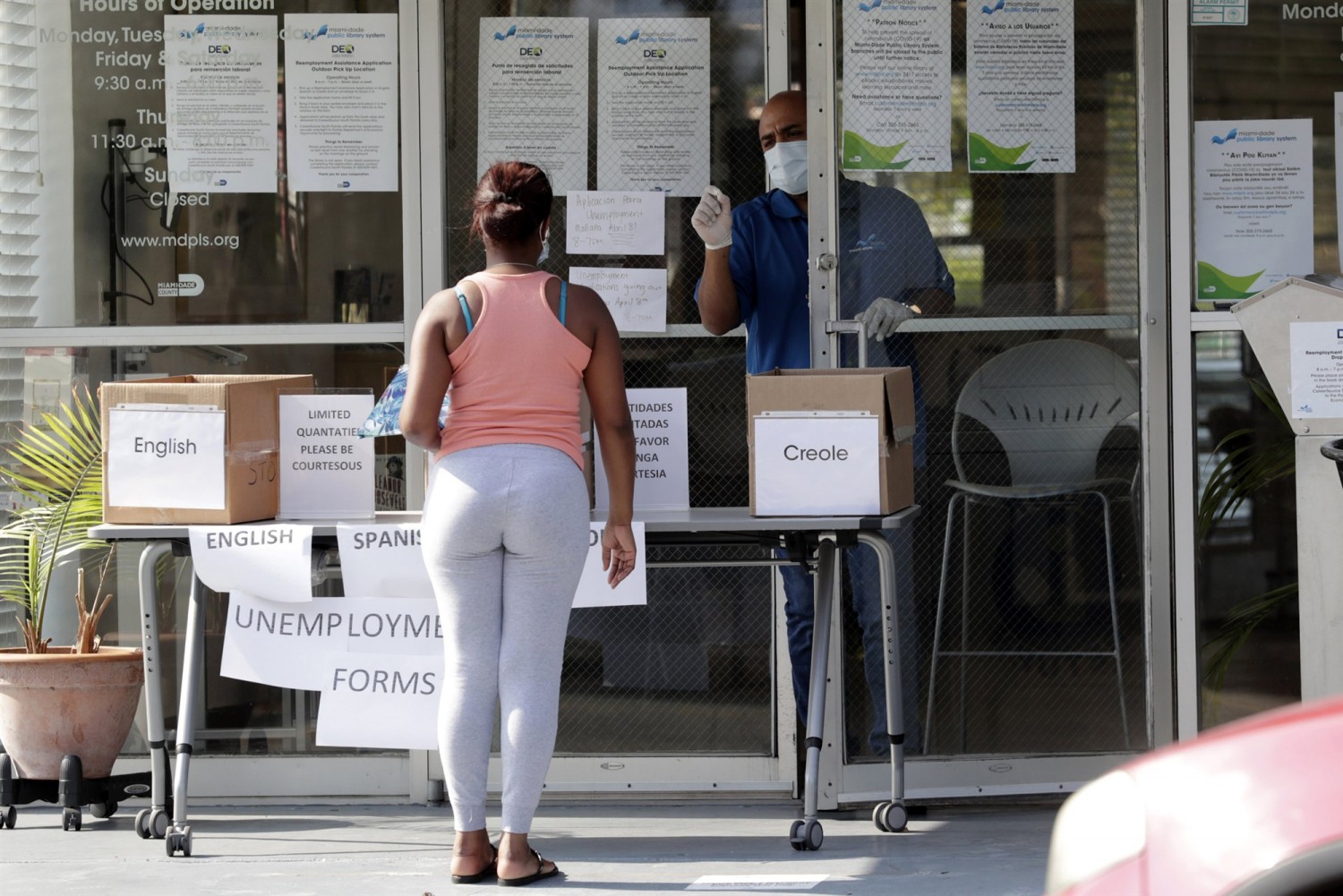This article is more than
5 year oldU.S. jobless claims reach 26 million since coronavirus hit, wiping out all gains since 2008 recession

Another 4.4 million Americans filed for initial jobless claims last week, revealing that at least 26 million people have requested unemployment benefits since the outbreak of the coronavirus pandemic.
In just one month, all job gains since the Great Recession have disappeared, according to new data released Thursday by the Department of Labor. The economy had created around 22 million jobs since 2010, during a historic decade of economic expansion that came to an abrupt end in February.
“It is very easy with these numbers to get to 20 percent unemployment,” said David G. Blanchflower, a professor of economics at Dartmouth College.
In a paper for the National Institute Economic Review, he and David N.F. Bell, who teaches economics at the University of Stirling, in Scotland, examine unemployment data in the United States and the United Kingdom before and after the COVID-19 crash.
“The concern is that this time around there has not been a boom for many and those who have done badly … will now do even worse,” they wrote. “The young, the lower income and least educated groups who generally do well in a boom but didn’t in the last ‘boom’ are thus even more vulnerable than usual in the coming downturn.”
Each week, the breadth of the recession comes into finer focus. Consumers are pessimistic, and manufacturing sentiment plumbs new depths.
“The problem is the economy is still shut down,” says Torsten Slok, the chief economist for Deutsche Bank Securities. “The doors are still closed. There is still no smoke coming out of the chimneys in corporate America.” Given that, he adds, it is “not surprising that you continue to see significant layoffs.”
In recent days, President Donald Trump has suggested several states could ease some of the restrictions they have put in place to mitigate the spread of the novel coronavirus.
A week ago, he and his advisers released “Guidelines for Opening Up America Again." They suggest governors should decide when to ease restrictions. Since then, there has been confusion and controversy about testing and timetables.
Over the last three weeks, initial jobless claims have declined, but they are still jaw-dropping totals. Many economists worry that, as the crisis continues, there could be a second wave of layoffs and applications for unemployment benefits.
“I think the first wave came,” said Blanchflower, who believes there were indications of an oncoming crisis in the March jobs data. “People thought maybe they could hang on; then really, they can’t.”
There are some 30 million small businesses in this country, and many of them are struggling to stay afloat.
“We continue to stem the bleeding to make sure we do not get to the second wave,” Slok said. “The conversation is changing from the sheer magnitude of these numbers to what can be done to stem this significant deterioration.”
The $350 billion Paycheck Protection Program, part of the $2 trillion Coronavirus Aid, Relief, and Economic Security (CARES) Act, helped some business owners secure low-interest loans. However, the majority of America's small businesses missed out, after funds dried up just two weeks into the program. New legislation would replenish the fund, and many businesses are hopeful they will have better luck in a second round, but time is of the essence.
PPP is supposed to help small businesses retain workers during the downturn. If a company maintains its pre-crisis headcount for eight weeks following the loan, the interest will be forgiven. But it’s unclear what the economy will look like by July, and what will happen after that.
At the White House this week, Treasury Secretary Steven Mnuchin said he doesn’t expect there will be more PPP money available after the next round is exhausted. “We would expect this is the last tranche,” he told reporters. Economists like Slok worry that there may be a need for more.
Download the NBC News app for full coverage of the coronavirus outbreak
From the beginning, PPP was beset with problems, and in recent days, it has become clear many larger companies — some of which are publicly traded — secured loans worth millions of dollars. It’s another example of how the mechanics of the U.S. economy aren’t working the way they are supposed to.
This week, New York Gov. Andrew Cuomo said his state’s unemployment website “collapsed.” In Florida, there is a backlog of hundreds of thousands of applications for benefits.
If states can’t fix their broken systems, Slok says, the ramifications could be devastating. Unemployment benefits are “automatic stabilizers,” designed to support the whole economy. If states aren’t able to process payments, out-of-work Americans won’t have money to spend.
“That ultimately means that the recession is at risk of becoming even deeper,” he says.